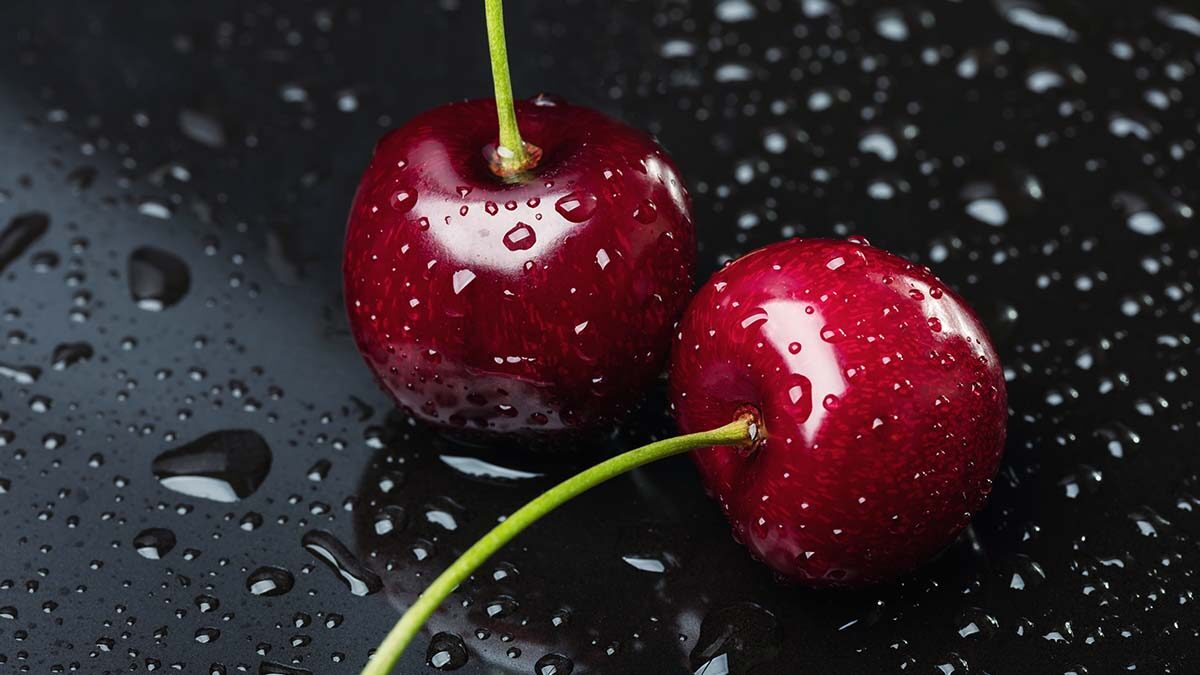The Washington State Fruit Commission, our largest cherry producer, can fund reviews that cherry-pick studies on the anti-inflammatory effects of cherries in a petri dish and animal models. But what we’ve needed are human studies. For example, if we stuff the human equivalent of up to a thousand cups of cherries down the throats of rats, it appears to have an anti-inflammatory effect, but we could never eat that many. (In fact, if we tried, it could end badly. One poor guy who ate 500 cherries whole—without spitting out the pits—ended up fatally obstructing his colon.)
A decade ago, we didn’t have many human studies, but thankfully, now we do. A study published in The Journal of Nutrition had men and women eat about 45 cherries a day for a month (I wouldn’t mind being part of that study!). The researchers found a 25% drop in C-reactive protein levels (a marker of inflammation), as well as an inflammatory protein with an inelegant acronym RANTES (“Regulated on, Activation, Normal, T cell, Expressed, and Secreted”). Even a month after the study ended, there appeared to be residual anti-inflammatory benefit from the cherry fest.
These subjects were all healthy, with low levels of inflammation to begin with, but a follow-up study, highlighted in my video, Gout Treatment with a Cherry on Top, on folks with higher levels found similar results for C-reactive protein and for a number of other markers for chronic inflammatory diseases. Do cherries, then, help people who actually have a chronic inflammatory disease?
Back in 1950, in an obscure Texas medical journal, “observations made by responsible physicians” suggested that in a dozen patients with gout, eating half a pound of fresh or canned cherries helped prevent flares of gout. But the issue had never seriously been tested, until recently. Gout is an excruciatingly painful inflammatory arthritis caused by the crystallization of uric acid within joints. Based on the National Health and Nutrition Examination Survey 2007–2008, the prevalence of gout in the US is estimated to be 3.9% among US adults, which translates into 8.3 million people.
Hundreds of gout sufferers were studied, and cherry intake was associated with a 35% lower risk of gout attacks, with over half the risk gone at three servings measured over a two day period (about 16 cherries a day). That’s the kind of efficacy the researchers saw with a low-purine diet (uric acid is a break-down product of purines). This same research group found that purine intake of animal origin increased the odds for recurrent gout attacks by nearly five-fold. Heavy alcohol consumption isn’t a good idea either.
There are some high-purine non-animal foods, like mushrooms and asparagus, but the researchers found no significant link to plant sources of purines. So, the researchers recommended eliminating meat and seafood from the diet. This may decrease risk substantially, and adding cherries on top may decrease risk of gout attacks even further. Same thing with the leading drug: allopurinol works, but adding produce appears to work even better.
Often, dietary changes and cherries may be all patients have, as doctors are hesitant to prescribe uric acid-lowering drugs like allopurinol due to rare but serious side-effects.
In addition to fighting inflammation, cherries may also lower uric acid levels. Within five hours of eating a big bowl of cherries, uric acid levels in the blood significantly drop. At the same time, antioxidant levels in the blood go up. So, is it just an antioxidant effect? Would other fruit work just as well? No. Researchers tried grapes, strawberries, and kiwi fruit, and none significantly lowered uric acid levels, supporting a specific anti-gout effect of cherries.
There are some new gout drugs out now, costing up to $2,000 per dose and carry a “risk of toxicity that may be avoided by using nonpharmacologic treatments or prevention in the first place.” Given the potential harms and high costs, attention ought to be directed to dietary modification, reducing alcohol and meat intake, particularly sardines and organ meats. “If life serves up a bowl of cherries (consumed on a regular basis), the risk of a recurrent gout attack may be meaningfully reduced.”
More about the inflammation fighting effects of sweet cherries in my video Anti-inflammatory Life is a Bowl of Cherries.
I’ve previously mentioned gout and controlling uric acid levels in my videos:
- Testing Your Diet with Pee & Purple Cabbage
- Who Shouldn’t Consume Curcumin or Turmeric?
- Miocene Meteorites and Uric Acid
- Flesh and Fructose
Other foods that may help tamp down inflammation:
- Garden Variety Anti-inflammation
- Anti-inflammatory Antioxidants
- Fighting Inflammation in a Nut Shell
- Boosting Immunity While Fighting Inflammation
- Which Spices Fight Inflammation?
In health,
Michael Greger, M.D.
PS: If you haven’t yet, you can subscribe to my free videos here and watch my live year-in-review presentations Uprooting the Leading Causes of Death, More Than an Apple a Day, From Table to Able, and Food as Medicine.
